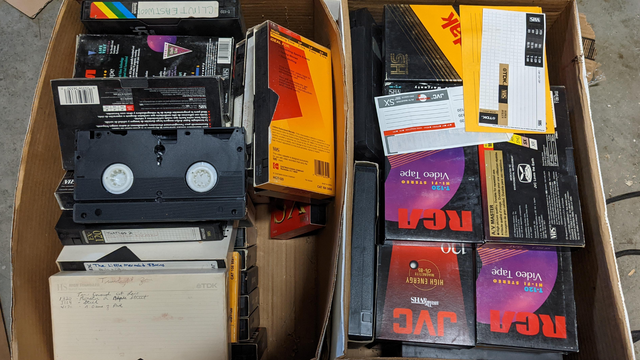Understanding the Video8 Format
Long before smartphones replaced camcorders, the Video8 format was the go-to choice for capturing life’s most precious memories. Introduced in the 1980s by Sony, Video8 offered families a compact, portable way to record vacations, school plays, and those spontaneous backyard moments. It marked a shift from bulky VHS camcorders to smaller, lighter devices—and the nostalgia it holds today is undeniable.
If you’ve uncovered a box of these tapes but no longer have a Video 8mm cassette player, you’re not alone. These formats are outdated, and most playback devices are no longer manufactured. But the memories inside those tapes still matter—and they can still be recovered.
What’s the Difference Between Video8, Hi8, and Digital8?
If you've seen multiple labels—Video8, Hi8, and Digital8—you might be wondering what’s what. These are all 8mm formats, but each came out at a different time with slightly different features:
-
Video8: The original analog format. Most tapes from the late ’80s and early ’90s are Video8.
-
Hi8: An improved version with better picture quality, still analog.
-
Digital8: The final generation, using the same cassette design but storing data digitally. Some Digital8 camcorders could even play Hi8 and Video8 tapes.
We break down these differences more in our guide on the 8mm tape formats, including helpful visuals.

Do You Still Need a Video 8mm Cassette Player?
To view a Video8 tape today, you’d need a working Video8 or compatible camcorder—devices that are notoriously hard to find in good condition. Even if you still own one, tapes from decades ago can be fragile. Playback can damage the tape or even jam inside the machine.
Rather than risking it, many families choose to use an 8mm cassette to digital service. With digitization, you can watch your old home videos on your computer, smart TV, or share them online with loved ones—no camcorder required.
Why It's Time to Convert Hi8 Tapes to Digital
Even if your tapes are labeled Hi8 or Digital8, they still degrade over time. Mold, humidity, and magnetic decay slowly erase the footage inside. Unlike DVDs or USB drives, analog tapes have no error correction—once the signal fades, it’s gone.
That’s why families across the U.S. are turning to America’s best 8mm tape conversion service to preserve their memories before it's too late.
Our experts at Heirloom specialize in fragile formats. We even offer free repair of broken or moldy tapes and issue store credit for blanks.
To learn more, read about how the team of military veterans at Heirloom can protect the memories from any type of of video tape.

The Better Way to Preserve Your Tapes
Instead of searching for a video 8mm cassette player, you can trust a professional service that digitizes each tape by hand and stores it safely in the cloud. Heirloom delivers digital files you can stream, download, or share, and doesn’t lock you into a subscription. Unlike companies that still mail DVDs, Heirloom makes your memories instantly accessible and secure.
📧 Want more tips like this?
Subscribe to Heirloom emails to learn how to preserve your priceless memories. Get discount codes for expedited shipping, quality digitizing, and secure cloud storage. We never spam, and it’s easy to unsubscribe at any time.


